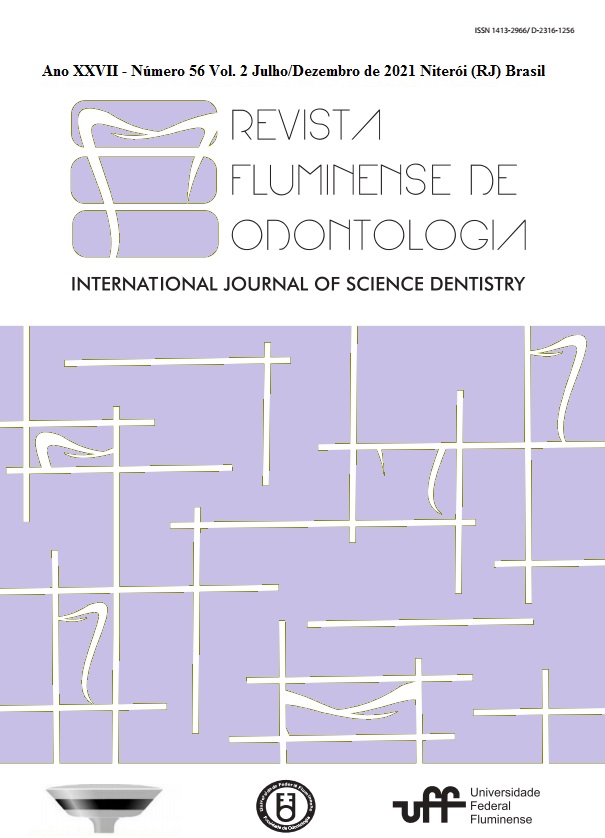AVALIAÇÃO DA FIDELIDADE DE COR ENTRE CIMENTOS TRY-IN E CIMENTOS RESINOSOS: UMA REVISÃO DE LITERATURA
Resumo
Os dentes anteriores apresentam importância fundamental na estética da face e, por isso, são extremamente valorizados pelos pacientes que desejam clarear, aumentar, melhorar a anatomia ou posição dos mesmos, na busca de um sorriso mais natural e harmônico. As facetas laminadas conseguiram combinar o requisito conservador de seus preparos com suas qualidades de resistência, biocompatibilidade e, principalmente, estética inigualável. Um dos motivos de falhas na técnica de facetas laminadas é a escolha da cor do agente cimentante. Para facilitar a escolha de cor, os fabricantes oferecem bisnagas de cimento para testes de cor, os chamados cimentos "try-in". Então, saber se estes são confiáveis em relação à cor final de uma restauração é um fator de suma importância em um tratamento estético que utiliza facetas laminadas. Com isso, o objetivo deste trabalho foi avaliar a fidelidade de cor entre os cimentos try-in e seus respectivos cimentos resinosos no resultado restaurador final de facetas / lentes de contato dental, analisando se a espessura da faceta de cerâmica influencia na concordância de cor entre as pastas de teste e os cimentos resinosos, e observando se a tonalidade das pastas try-in concorda com a dos respectivos cimentos resinosos, o que pode resultar em uma diferença na cor final da restauração. Foi realizada uma revisão bibliográfica nas bases de dados PubMed, Scielo e Wiley Library, utilizando os descritores “try-in pastes”, “resin luting cement”, “laminate veneers” e “color perception tests”. Foram buscados artigos entre 1977 até 2019. Esta revisão apresenta o que há de mais novo na literatura sobre fidelidade de cor dos cimentos try-in e, em sua maioria, os autores concluem que há diferenças de cor entre as pastas de teste e seus respectivos cimentos resinosos. Pode-se concluir que não houve concordância de cores entre as pastas de teste e os cimentos resinosos, na maioria dos artigos estudados. A espessura da cerâmica e as diferenças de tonalidades entre cimentos try-in e resinosos influenciaram no resultado estético final. Diante disso, pode-se afirmar que é importante que a concordância de cor entre as pastas de teste e seus cimentos resinosos seja analisada com cautela, e que mais estudos sejam realizados, a fim de contribuir para um resultado clínico estético favorável.
Palavras-chave: Pastas de teste; Cimento Resinoso; Laminados; Testes de percepção
de cor.





